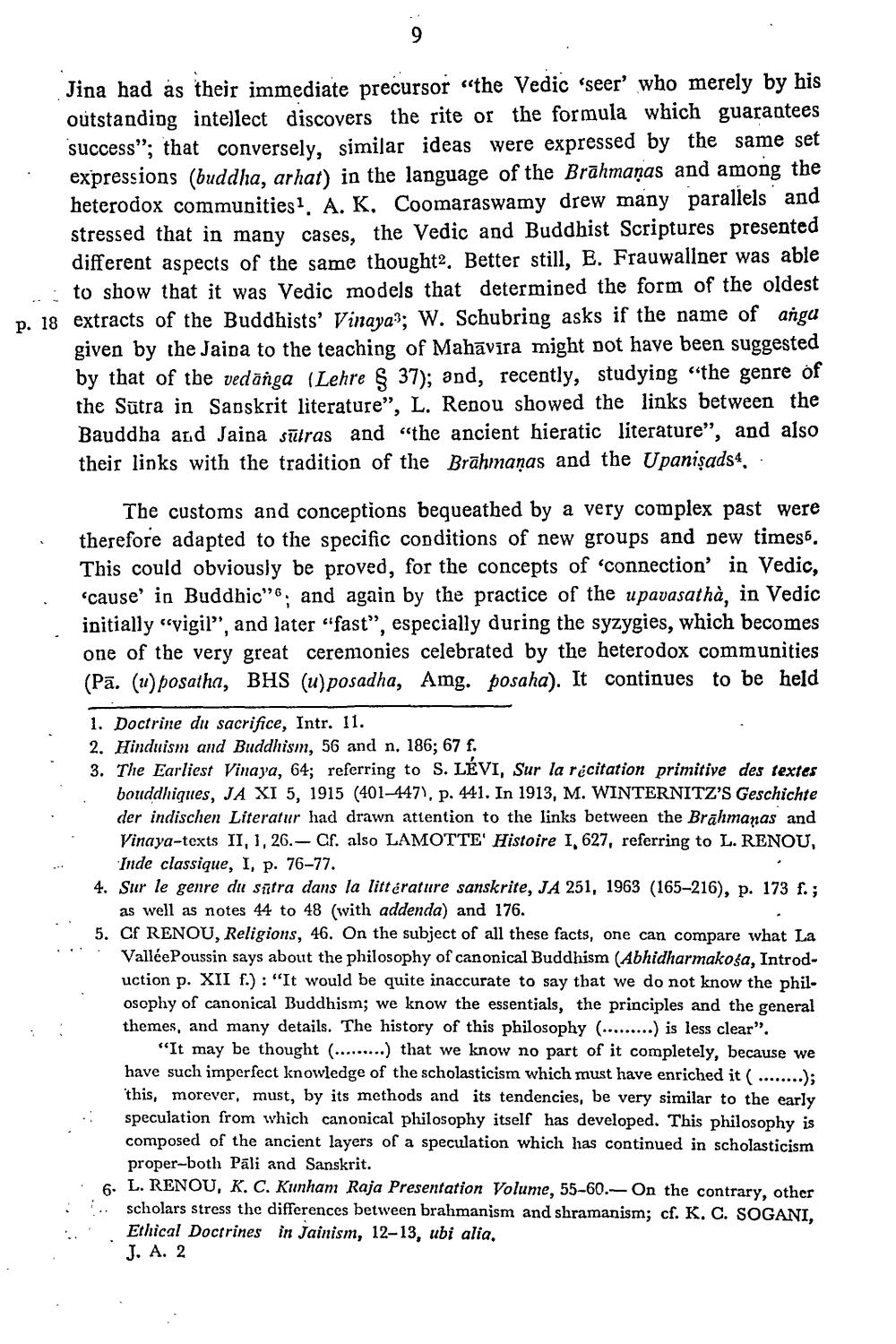________________
Jina had as their immediate precursor “the Vedic 'seer' who merely by his outstanding intellect discovers the rite or the formula which guarantees success"; that conversely, similar ideas were expressed by the same set expressions (buddha, arhat) in the language of the Brāhmaṇas and among the heterodox communities?, A. K, Coomaraswamy drew many parallels and stressed that in many cases, the Vedic and Buddhist Scriptures presented different aspects of the same thought2, Better still, E. Frauwallner was able
to show that it was Vedic models that determined the form of the oldest p. 18 extracts of the Buddhists' Vinayas: W. Schubring asks if the name of angu
given by the Jaina to the teaching of Mahāvīra might not have been suggested by that of the vedänga (Lehre § 37); and, recently, studying “the genre of the Sūtra in Sanskrit literature", L. Renou showed the links between the Bauddha and Jaina sūtras and “the ancient hieratic literature", and also their links with the tradition of the Brahmanas and the Upanişads4.
The customs and conceptions bequeathed by a very complex past were therefore adapted to the specific conditions of new groups and new times. This could obviously be proved, for the concepts of 'connection' in Vedic, 'cause' in Buddhic"6; and again by the practice of the upavasathà, in Vedic initially "vigil", and later "fast", especially during the syzygies, which becomes one of the very great ceremonies celebrated by the heterodox communities (Pā. (u)posatha, BHS (u)posadha, Amg. posaha). It continues to be held
1. Doctrine du sacrifice, Intr. 11. 2. Hinduism and Buddhism, 56 and n. 186; 67 f. 3. The Earliest Vinaya, 64; referring to S. LÉVI, Sur la recitation primitive des textes
bouddhiques, JA XI 5, 1915 (401-447), p. 441. In 1913, M. WINTERNITZ'S Geschichte der indischen Literatur had drawn attention to the links between the Brahmanas and Vinaya-texts II, 1, 26.- Cf. also LAMOTTE' Histoire I, 627, referring to L. RENOU,
Inde classique, I, p. 76-77. 4. Sur le genre du satra dans la littérature sanskrite, JA 251, 1963 (165-216), p. 173 f.;
as well as notes 44 to 48 (with addenda) and 176. 5. CF RENOU, Religions, 46. On the subject of all these facts, one can compare what La
ValléePoussin says about the philosophy of canonical Buddhism (Abhidharmakosa, Introduction p. XII f.): "It would be quite inaccurate to say that we do not know the phil. osophy of canonical Buddhism; we know the essentials, the principles and the general themes, and many details. The history of this philosophy (.........) is less clear".
"It may be thought (.........) that we know no part of it completely, because we have such imperfect knowledge of the scholasticism which must have enriched it (........); this, morever, must, by its methods and its tendencies, be very similar to the early speculation from which canonical philosophy itself has developed. This philosophy is composed of the ancient layers of a speculation which has continued in scholasticism
proper-both Pāli and Sanskrit. . 6. L. RENOU, K. C. Kunham Raja Presentation Volume, 55-60.- On the contrary, other ::.. scholars stress the differences between brahmanism and shramanism; cf. K. C. SOGANI,
Ethical Doctrines in Jainism, 12–13, ubi alia. J. A. 2




